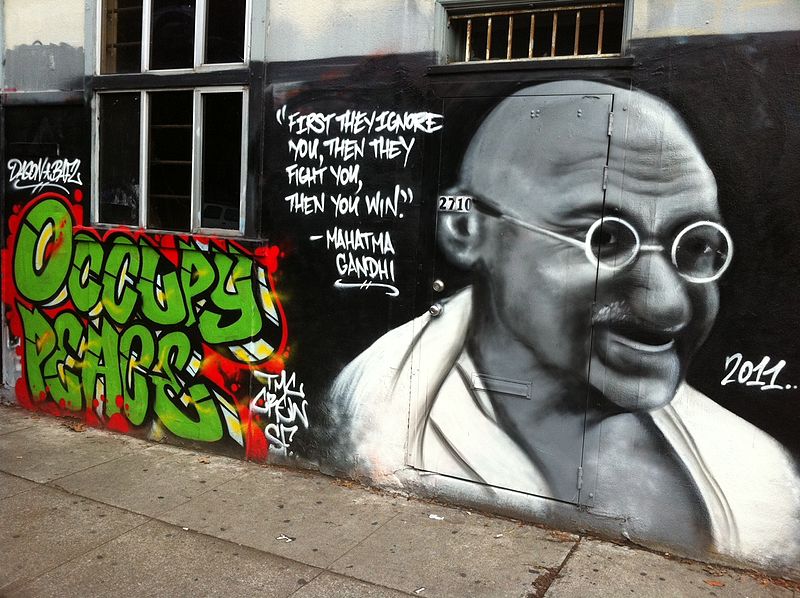by Ken Butigan

“Then you Win”; Occupy graffiti;
Artist unknown; posted on
wagingnonviolence.org
For some time I have been increasingly convinced that, in spite of the horrific systems of violence and injustice that grind away, we are in the midst of a long-term “nonviolent shift.” By this I don’t mean we will create a utopia where conflict, violence, and injustice cease to exist. Interpersonal and structural violence — reinforced by a deeply rooted violence belief system — are grim realities that humanity will long have to face. The nonviolent shift, rather than portending an ideal society, here signifies a world where people are increasingly equipped with the tools to challenge, transform, and heal violence and injustice in a more powerful, creative, and effective way.
The Egyptian revolution, which began just over a year ago, was dedicated to ending a thirty-year dictatorship and sparking a long-term process of transformation within the country. But like many other powerful movements, it has also had unintended world-historical consequence that have helped to boost the momentum of this shift.
Read the rest of this article »
by Miki Kashtan
One of the most frequent questions I hear when I speak about Nonviolent Communication is “Why Nonviolent?” People often hear the word nonviolent as a combination of two words, as a negation of violence. Since they don’t think of themselves as “violent,” the concept of “non-violence” doesn’t make intuitive sense, and appears foreign to them.
For some time, I felt similarly. I was happier when I heard people talk about Compassionate Communication instead of Nonviolent Communication (NVC) because it felt more positive. After all, the practice of NVC itself is about focusing on what we want and where we are going instead of looking at what’s not working. So why would the name not reflect this focus?
Like others, I was unaware of the long-standing tradition of nonviolence to which the practice of Nonviolent Communication traces its origins. Then I learned more about Gandhi’s work and the Civil Rights movement. That is when I fell in love with the name Marshall Rosenberg gave to this practice. That love has deepened over the years. Now I want to bring out the continuity so as to situate NVC within the tradition of nonviolence. I do this by exploring seven core principles of Gandhian nonviolence that are also reflected in the practice of NVC.
Read the rest of this article »





